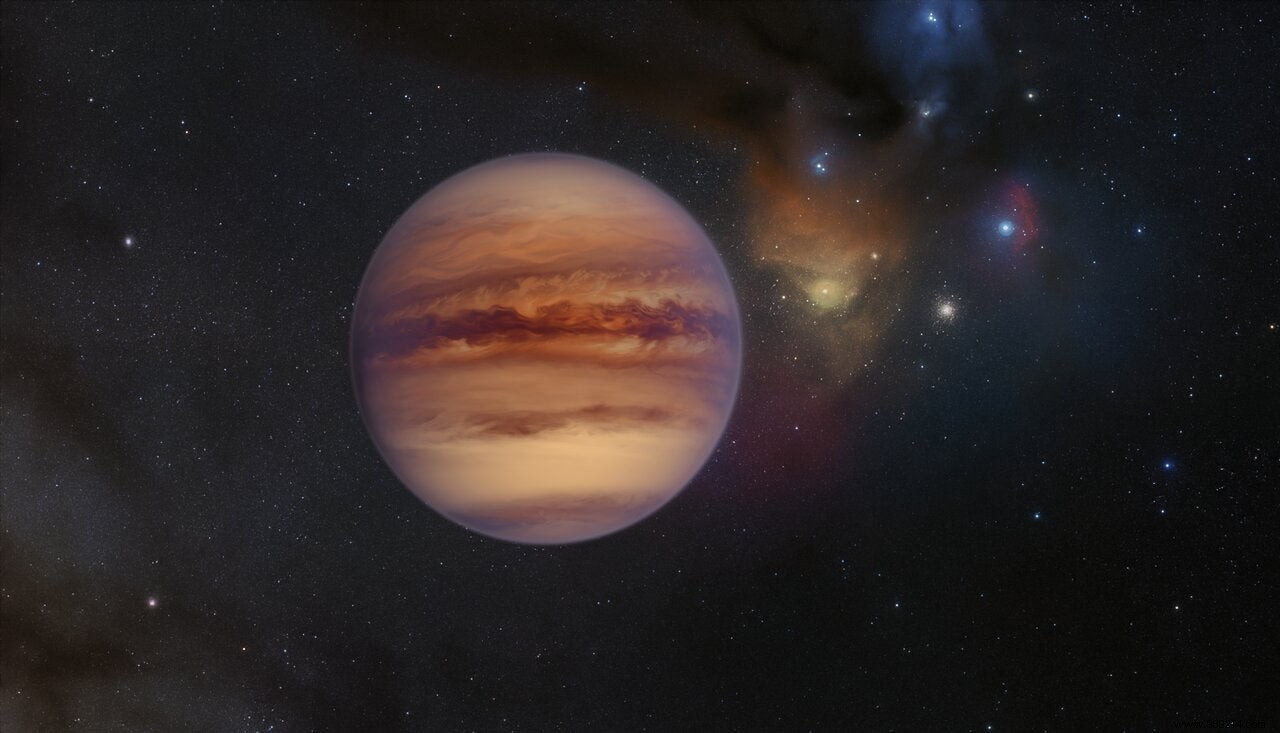A collaboration of astronomers reports the discovery of 70 to 170 new wandering planets in archived data from multiple telescopes. These new observations double the number of such known objects in the galaxy and suggest that there could be several billion of them.
Falling on an exoplanet is not easy. Unlike stars, planets do not emit any light. To find them, it is therefore necessary to rely on indirect means such as the radial velocity method or the transit method. These two techniques have allowed us to identify more than 4000 extrasolar worlds . However, all of them imply the presence of at least one star.
However, there are other planets, called "orphans", or "wanderers". Floating through the dark expanse of interstellar space, these worlds have no stars , either because they were ejected from their system of origin, or because they never had one, probably formed from a molecular cloud.
Astronomers have been aware of their existence since the 1990s, but many questions still remain, such as the conditions in which they form, their size, composition and abundance relative in the galaxy.
To detect these wandering planets, astronomers generally rely on the gravitational microlensing technique. The gravitational force of the planet here bends the light of a star located in the background in the line of the Earth. In other words, the deflected light betrays the presence of a body between the observer (telescope) and the object in the background (star). And sometimes it's a planet.
The problem with microlenses is that they tend to be one-time events . And for good reason, the method requires the perfect alignment of three objects. However, in the universe, everything is in motion. Thus, the inability to study a given object for an extended period represents a real limiting factor, which brings us back to this new study.

As part of this new work, astronomers have assumed that some wandering planets, formed only a few million years ago, are still very hot. If so, then they can bedirectly detectable by telescopes .
For this study, published in Nature, the team looked at almost twenty years of astronomical data, including observations collected by the European Southern Observatory, the Canada-France-Hawaii telescope, the Subaru telescope and ESA's Gaia satellite. All of this data (about 80,000 images totaling 100T) covered an area of the sky of about 170 square degrees, which is much larger than in previous surveys.
For the analysis, the researchers focused on a range of optical and near-infrared wavelengths. At the end of this work, no less than 3,455 candidates were identified s. On this sample, astronomers estimate that 70 to 170 objects the size of Jupiter could be considered true wandering planets. Most evolve within 400 light years of Earth.
Note that astronomers could not determine an exact number due to uncertainties related to the presumed age of the region and the mass of the objects.
“We were able to deduce individual masses by comparing the luminosity of each planet with theoretical models. The main difficulty is that the planets are relatively bright when young and quickly fade over time “, underline the authors. "Secondly, if the age of the planet is not precisely known, which is the case in our sample, it is difficult to differentiate an old massive planet from a younger, but less massive one . »

A follow-up study to measure the precise age and mass of these alleged worlds is already planned. Spectroscopic observations will also aim to determine other physical properties such as effective temperature and composition.
This new work can, however, teach us one thing. According to the astronomers, the total number of wandering objects observed in the new study exceeds the number of wandering planets expected if they were formed solely from the collapse of a small molecular cloud. At least some of these planets have therefore visibly been ejected from their system of origin.
Assuming that these worlds are likely produced by both processes, the latter are likely to have a large presence in the galaxy. A study published two years ago had estimated their number at more than sixteen billion .